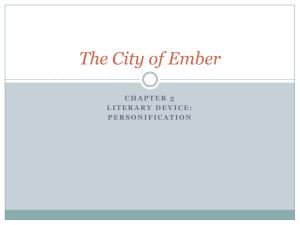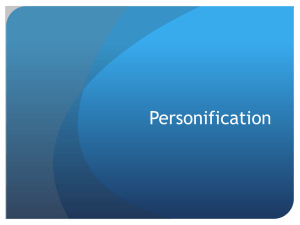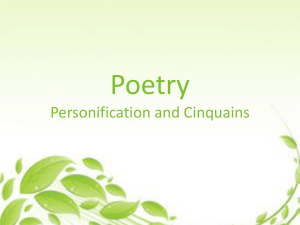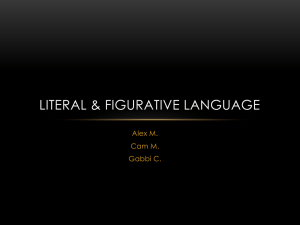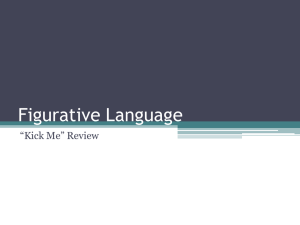Macbeth Speech Essay
advertisement
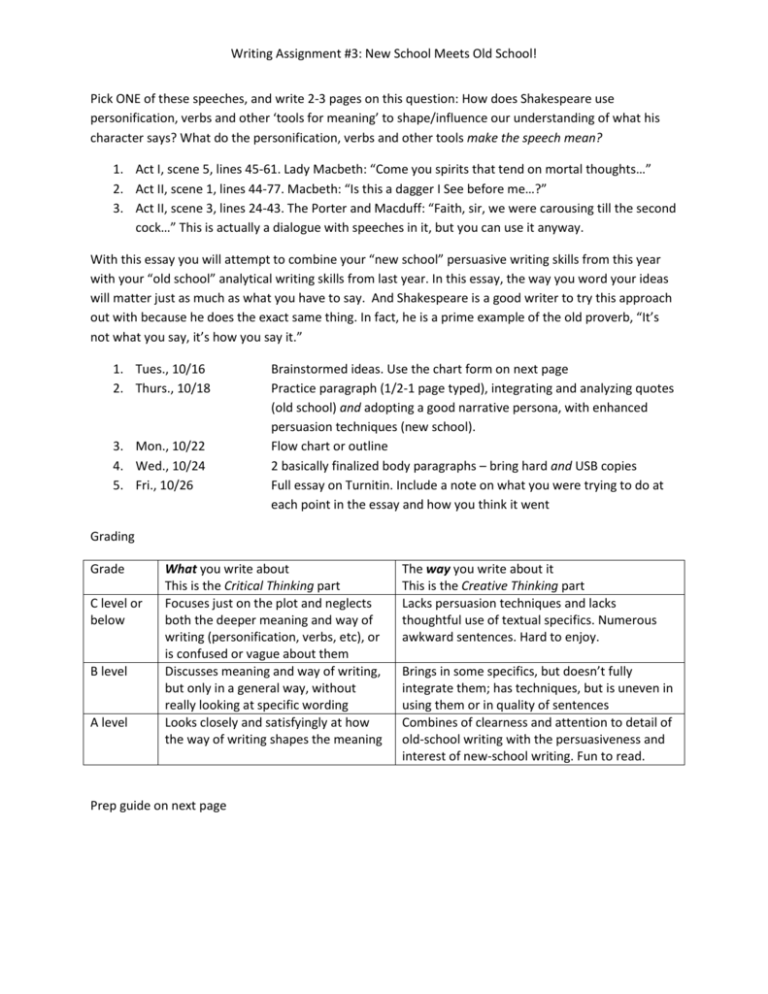
Writing Assignment #3: New School Meets Old School! Pick ONE of these speeches, and write 2-3 pages on this question: How does Shakespeare use personification, verbs and other ‘tools for meaning’ to shape/influence our understanding of what his character says? What do the personification, verbs and other tools make the speech mean? 1. Act I, scene 5, lines 45-61. Lady Macbeth: “Come you spirits that tend on mortal thoughts…” 2. Act II, scene 1, lines 44-77. Macbeth: “Is this a dagger I See before me…?” 3. Act II, scene 3, lines 24-43. The Porter and Macduff: “Faith, sir, we were carousing till the second cock…” This is actually a dialogue with speeches in it, but you can use it anyway. With this essay you will attempt to combine your “new school” persuasive writing skills from this year with your “old school” analytical writing skills from last year. In this essay, the way you word your ideas will matter just as much as what you have to say. And Shakespeare is a good writer to try this approach out with because he does the exact same thing. In fact, he is a prime example of the old proverb, “It’s not what you say, it’s how you say it.” 1. Tues., 10/16 2. Thurs., 10/18 3. Mon., 10/22 4. Wed., 10/24 5. Fri., 10/26 Brainstormed ideas. Use the chart form on next page Practice paragraph (1/2-1 page typed), integrating and analyzing quotes (old school) and adopting a good narrative persona, with enhanced persuasion techniques (new school). Flow chart or outline 2 basically finalized body paragraphs – bring hard and USB copies Full essay on Turnitin. Include a note on what you were trying to do at each point in the essay and how you think it went Grading Grade C level or below B level A level What you write about This is the Critical Thinking part Focuses just on the plot and neglects both the deeper meaning and way of writing (personification, verbs, etc), or is confused or vague about them Discusses meaning and way of writing, but only in a general way, without really looking at specific wording Looks closely and satisfyingly at how the way of writing shapes the meaning Prep guide on next page The way you write about it This is the Creative Thinking part Lacks persuasion techniques and lacks thoughtful use of textual specifics. Numerous awkward sentences. Hard to enjoy. Brings in some specifics, but doesn’t fully integrate them; has techniques, but is uneven in using them or in quality of sentences Combines of clearness and attention to detail of old-school writing with the persuasiveness and interest of new-school writing. Fun to read. Writing Assignment #3: New School Meets Old School! What to think about as you brainstorm: What is the LITERAL meaning of each phrase? People shortcut this part by describing the literal meaning in a very general way. That’s a BAD idea. Figure out exactly what the literal meaning is, word by word. If you can’t, then write down specific questions and come talk to me. If you don’t really get the literal meaning, your figurative interpretation of the speech will be weak. Ps, to understand the literal meaning, you probably need to think about the bullets below this one!! When does Shakespeare use personification? Find all examples in your speech and make a clear picture in your head of what the personified being might look and act like. Use your imagination!! What verbs does Shakespeare use? They are often associated with the personified beings, so that the beings “do things” and have a sort of power. What are they doing? What power do they have? How do verbs shape our feeling about the personified beings? In what other ways (besides personification) does Shakespeare use imagery to feed our imaginations? This might be setting descriptions, metaphors, or any other visual figures of speech. Treat them the same imaginative way you treat the personified stuff. What other ‘tools for meaning’ does Shakespeare have his character use? Examples include contrasts/opposites, echoes, double meaning words, metaphors, and so on. Having thought all this through, how does the line or phrase shape/influence the meaning of the speech? Brainstorming Chart To do this chart usefully, you must first REALLY re-familiarize yourself with your speech. You need to make a copy and then highlight-and-margin-note the heck out of the text before you fill out the chart. By the time you are done you should have a minimum of TEN rows in your chart. Don’t shortcut. If your chart looks weak, the first thing I’ll do is ask to see your marked up copy of the speech. Remember that this is brainstorming, and in brainstorming we include anything that MIGHT be useful, even if we are not sure. You’ll make decisions later on about which parts to actually use. Quote. Highlight the key words. Literal meaning. This is the Figurative meaning. When you Include act, scene and line #s. hardest part and once you get explain, refer to the keys words you it the figurative is easy. Don’t highlighted, showing what they add. shortcut it. You must refer to specific key words from the quote in this part, or you are wasting your time Ps, the way to get more space inside a box is to hit enter when the cursor is in the box. The way to get another row is to hit tab when the cursor is in the last box of the last row.
